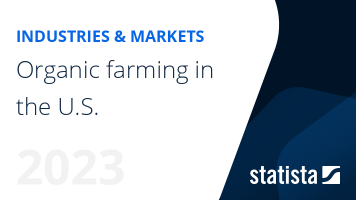Organic Food Market in Latin America - Statistics & Facts
The hectarage of organic crops has gone through considerable growth in Latin America since its first measurement in 2000, with Argentina and Uruguay as the leading countries in terms of organic farmland area. In 2021, there were over 280 thousand registered organic producers in the whole region, and the key permanent organic crops were coffee and cocoa. The interest in this kind of agriculture shows in the increased market value of bio-pesticides and organic fertilizers. At the end of the industry’s chain, Latin American consumers also have a growing interest in agrochemical-free fruits and vegetables and dairy food and beverages.
The region's organic giants
Argentina's organic crops extend from oilseeds to the traditional yerba mate. The food industry in the South American country also registers positive numbers in organic packaged food and beverage sales.Despite its smaller organic farmland area compared to Argentina, Mexico’s organic agricultural production is growing in market value. The industry accompanies the expansion, as some important companies selling organic products are based in the country. Furthermore, sales of organic packaged food and beverages are expected to keep growing in the country, as consumers appear to show interest in healthier eating habits.
Another large Latin American market for organic food and beverage is Brazil. Indeed, it is the country with the largest organic market in the region, and its revenue continues to grow.

































